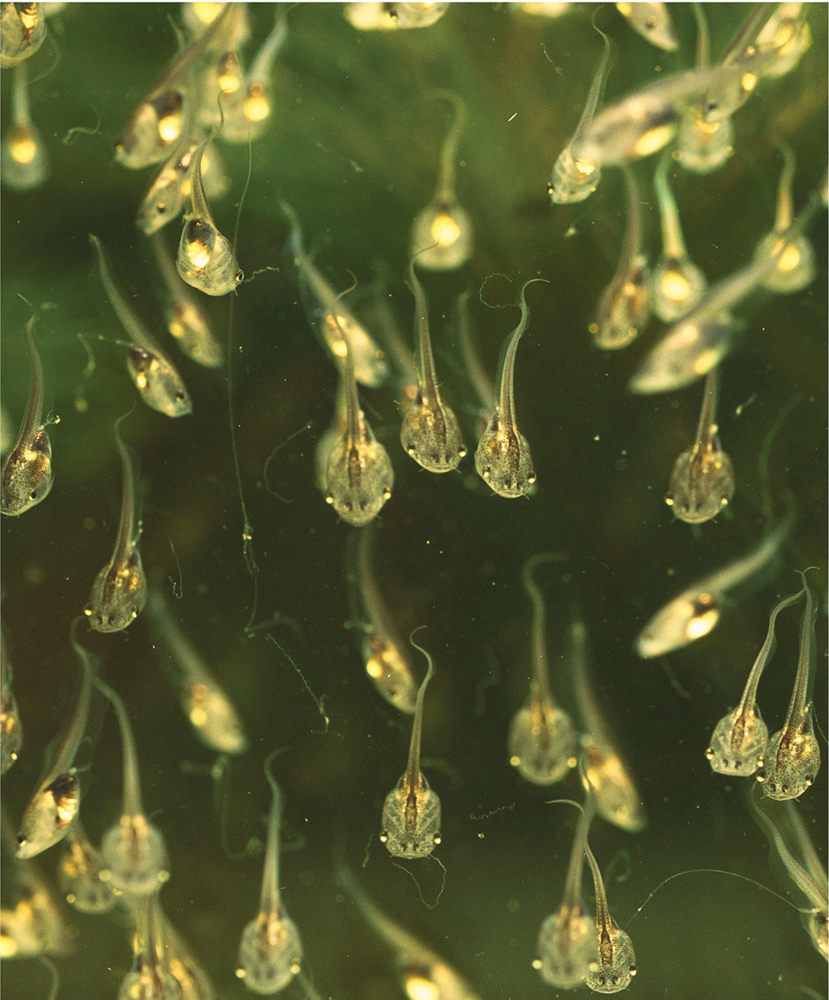CHAPTER 38 INTRODUCTION
CORE CONCEPTS
38.1 Animal endocrine systems release chemical signals called hormones into the bloodstream. These signals respond to the environment, regulate growth and development, and maintain homeostasis.
38.2 Hormones achieve specificity by binding to receptors on or inside their target cells. Their signals are amplified to exert strong effects on their target cells.
38.3 In vertebrate animals, the hypothalamus and the pituitary gland control and integrate diverse bodily functions and behaviors.
38.4 Chemical communication can also occur locally between neighboring cells or, through the release of pheromones, between individuals, coordinating social interactions.

Animals, like all organisms, respond to their environment, regulating their metabolism to meet changes in energy required by different activities and maintaining stable internal bodily functions. We have seen how the nervous system allows an animal to sense and respond to its environment, coordinating the animal’s movement and behavior (Chapters 35–37). The nervous system also works closely with the endocrine system to regulate an animal’s internal physiological functions. This coordination is accomplished by signals sent from the nervous system to the endocrine system, which distributes chemical signals throughout the body.
The signals communicated by the nervous and endocrine systems differ greatly in their modes of transmission and the times over which they act. The nervous system sends signals rapidly by action potentials running along nerve axons, and communication between adjacent nerve cells occurs by means of neurotransmitters in proximity at synapses. The endocrine system, on the other hand, relies on cells and glands that secrete chemical signals called hormones, which are released into the bloodstream and circulate throughout the body. As a result, endocrine communication is generally slower and more prolonged than the rapid and brief signals transmitted by nerve cells. Hormones exert specific effects on particular target cells within the body by binding to receptors on or in target cells. The downstream influence of hormones is amplified in a series of steps that occur along a particular endocrine pathway so that a small amount of hormone can have dramatic effects in the body.
In this chapter, we explore the properties and actions of hormones that help to coordinate and maintain a broad set of physiological functions of the organism. In particular, we examine the mechanisms by which hormones trigger cellular responses in their target organs. Because most hormones are evolutionarily conserved, their chemical organization is similar across a diverse array of animals. However, their functions often evolve rapidly, enabling hormones to serve new and broader roles.